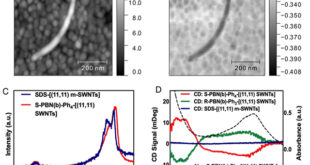Significance
Fuel adulteration has continued to be a problem for many years reference to the ubiquity of this energy source. The use of adulterated fuel can significantly reduce the service life of engines, reducing engine performance, and cause larger environmental pollution. For instance, adulteration of diesel using kerosene containing significantly high sulfur leads to the emission of sulfur oxide derivatives to the environment. This problem has persisted for many decades; therefore, sustainable fuel management is very important. To have better awareness, availability of elementary and reliable tests for fuel adulteration is critical.
In the past years, huge steps have been made towards mineral oil analysis, however most analysis methods are still expensive and complex, and have not been adapted to on-site measurement. In recent years, however, less laboratory bound approaches that overcome the shortcomings of the classical procedures have been developed implementing, fiber optics, mechanochromic materials, and field effect transistors. Unfortunately, straight-forward, robust, and portable approaches are still insufficient and alternative methods such as fluorescent molecular rotors as probes for viscosity are highly desired.
Researchers at Federal Institute for Materials Research and Testing (BAM) of Berlin in Germany: Carlo Tiebe, Jörg Schlischka, Knut Rurack, Jérémy Bell and Raúl Gotor investigated the viscosity testing potential of molecular rotors 4-dialkylamino-nitrostilbene (4-DNS) in developing rapid test probes for diesel adulteration. They design not only a reliable and accurate chemical analysis system, but also a disposable, cost effective, and easy to use probing system. Their research work is published in peer-reviewed journal, Energy & Fuels.
The authors studied the behavior of the molecular rotor when it was adsorbed onto a solid support. In addition, they came up with an embedded fluorescence detection system based on a smartphone. The ubiquitous application of the elaborate smartphones designed with effective cameras, they were able to achieve the detection of fluorometric and colorimetric changes and they introduced this as a powerful tool for field analysis. The authors in addition performed standard gas chromatography with flame ionization detection analyses of the kerosene/diesel mixtures in a bid to validate the results and authenticate the analytical performances and features of the rapid test.
The research team used a chemical system based on 4-DNS, which is a renowned fluorescent molecular rotor sensitive to viscosity. They found that the range of kinematic viscosities measured for diesel as well as its various mixtures with kerosene was consistent with the system’s response range, which allowed for the detection of minute aliquots of kerosene.
The authors then coated a derivative of the molecular rotor (4-DNS-OH) that could be sterically adsorbed in cellulose fiber networks without leaching on paper to come up with test strips that were stable upon dipping into fuel blends while giving a linear fluorescence response with increasing kerosene concentrations.
They also reported the successful design of a handheld analysis system based on a smartphone case integrating an LED and a strip support along with an application to read, analyze and interpret the fluorescence signal. This handheld analysis system yielded impressive linear responses as well as low detection limits down to 7% kerosene in diesel for the developed system.




Reference
Raúl Gotor, Carlo Tiebe, Jörg Schlischka, Jérémy Bell, and Knut Rurack. Detection of Adulterated Diesel Using Fluorescent Test Strips and Smartphone Readout. Energy Fuels, volume 31, (2017), pages 11594-11600.
Go To Energy Fuels
 Advances in Engineering Advances in Engineering features breaking research judged by Advances in Engineering advisory team to be of key importance in the Engineering field. Papers are selected from over 10,000 published each week from most peer reviewed journals.
Advances in Engineering Advances in Engineering features breaking research judged by Advances in Engineering advisory team to be of key importance in the Engineering field. Papers are selected from over 10,000 published each week from most peer reviewed journals.






